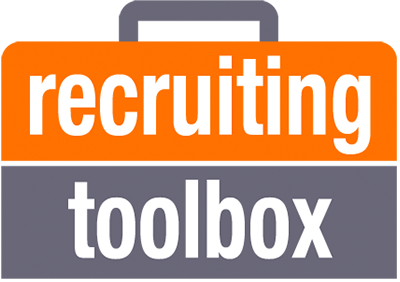Recruiting Toolbox Blog
How to Assess If a Candidate Is Actually Motivated to Do a Great Job
How Do You Evaluate Intrinsic Motivation to Do the Work When Speaking to a Candidate?
My latest article on the LinkedIn Talent Blog talks about the need for us all to dig deep into intrinsic motivation to do the work. That's different from just hiring generally passionate or extroverted or curious people. I emphasize that "can do" is different from "want to do," and "have to" is very different from "get to do." So many signals interviewers use are bad proxies, loaded with biases, and poor predictors of motivation to do the work. And as someone who leads a company that has trained 10,000+ interviewers and hiring managers, I can pretty confidently say, many of us need to be better at giving realistic job previews and evaluating - and giving appropriate weight to - motivation to do the work.
This blog post first appreared on LinkedIn´s Talent Blog.
I was a newbie HR rep right out of university, given the responsibility to fill the receptionist role at our regional office. I worked with our facilities manager to write up the job description, source and screen candidates, interview, facilitate the hiring decision, and make the offer.
Long story short, I filled this same role about every six months for the first 18 months. Why? Because we were hiring people who appeared to be good job matches — they believed in our mission, they demonstrated our core competencies, and they had the technical skills needed to do the actual work of a receptionist — but we didn’t hire well for intrinsic motivation to match the job.
Looking back, I’d say we overhired every time. I convinced people to take this job, promising career growth and challenging work that we couldn’t deliver on. The reality was this was a pretty repetitive job, with a ton of administrative tasks — like putting 500 labels on 500 envelopes — in between the phone answering work and escorting visitors back to meet with managers.
I oversold the job, and I hired people with intrinsic motivation that didn’t match the role. They’d quit. And it took three hires in a row quitting before their first-year anniversary for the hiring manager and me to realize we needed to offer up a much more realistic job preview and select candidates who actually enjoyed the reality of this job. Not just hire candidates who liked our mission, not just hire candidates with the skills to do the job, not just hire candidates with the soft skills that matched our values and competencies.
We needed to put much more weight into intrinsic motivation. And once we did, things changed.
The next receptionist we hired stayed — and thrived — in that role for years.
Your focus should be on candidates who are self-motivated to do the work
Being qualified for a job isn’t enough. Successful candidates also need to be motivated to do the work. And too often, we — as recruiters and hiring managers — make assumptions about motivation.
Candidates are trained to show up enthusiastically for an interview. And we have to be careful not to confuse passion, extroversion, enthusiasm, and questions about the job for intrinsic motivation to do the work. We need to evaluate intrinsic motivation to do the work.
As consultants, my team and I evaluate what makes someone a high performer at our client companies — part of our “what good looks like,” defining the hiring bar consulting work we do before we train up interviewing teams. High performers aren’t just qualified and capable. They are also self-motivated to do the work.
Job performance is a function of abilities to do the work and intrinsic motivation to do the work
Notice I’m emphasizing “to do the work” and not just speaking about (generally) motivated people. We’ve trained thousands of hiring managers and interviewers and read interview team feedback. We hear a lot about proxies for motivation — signals that the hiring manager uses to determine if this candidate is genuinely interested in the work, such as:
- “They’re so passionate. I loved their personality and their interest in our mission. They seemed genuinely excited about working for our company.”
- “She asked a lot of questions and demonstrated a real passion for our business.”
- “He’s been doing this work for a few years and this would be a step up in his career, so I assume he’s interested in the role.”
This is a problem. Proxies are bad because they’re loaded with unexplored assumptions. And there are so many places throughout the recruiting process that hurt our chances of getting an accurate read on a candidate’s intrinsic motivation:
- The employer branding messaging is too high level and generic to describe the work.
- The job ad sucks at describing the work.
- The recruiter doesn’t dig into the job specifics with the candidate during the phone screen.
- The hiring manager fails to describe the daily realities of the work in their longer interview.
- The individual interviewers are too busy evaluating technical or soft skills to share a realistic job preview.
So, no surprise then, that we’re left with assumptions, proxies, and biases.
How can we more effectively evaluate intrinsic motivation to do the work, then?
It starts with a realistic job preview. And that starts with breaking down the job into something more realistic than “responsible for leading a team of customer service representatives” or “providing excellent patient care” or “writing code to make our supply chain systems more efficient.”
What will the person hired actually do? Who will they interact with? What value will they provide? What impact will their work make? What’s hard and challenging? What’s easy and predictable and repetitive? What will the person hired need to do that’s high stress? What’s different about this job versus other similar jobs at other companies — more manual work, more customer interaction, more hands-on coding vs. design, more travel vs. in-office work?
For example, if you’re an executive recruiter and you don’t like to talk to strangers, you’re probably not going to be intrinsically motivated by a job requiring a lot of networking and passive candidate engagement.
If you’re like my wife, who works in healthcare, and you love direct patient help and hands-on care but dislike conflict, then you won’t want to be in a supervisor role in a busy clinic with lots of staffing issues and frustrated patients who have long wait times.
Too often, we brand the culture, the benefits and pay, the focus on inclusion, but we don’t brand the actual work. During the sourcing and interviewing phases, we need to share more details about the work, and then dig in to get evidence that this candidate wants to do the work. (Curious recruiters are best at understanding and sharing this kind of info.)
What can we ask candidates to understand their intrinsic motivation?
- I see you worked in a similarly titled role at your last company. What do you hope will be the same if you’re hired here? What do you hope will be different?
- Tell me about a time you had to X. What kind of challenges did you run into? That must have been frustrating. What did you do? How did you do that? Why did you do it that way? Looking back, did you enjoy that work? What part of that work do you hope to avoid in your next job?
- Let’s talk through the day-to-day realities of this job. If hired, you’d do quite a bit of X. Where and when have you done X before? Tell me about a time you did X. What did you like — and not like — about doing X?
- Based on what you’ve shared with me, I think some of this job is likely a lot more hands-on than what you’re used to. I’m worried that this role isn’t the right match for you. But I don’t want to make an assumption about what you’re looking for in your next career move. Can you talk to me more about the actual work you do and don’t want to do? What kind of questions do you have for me about this specific role and how it matches to what you want to spend your days doing?
What are we listening for?
- When talking about their previous work, are they framing it as “I got to” or “I had to”? For recruiters, say, getting to talk to so many interesting people every day should be seen as a big positive, not a big negative.
- When talking about the work, are they not just sharing they can do something, but also enjoy doing that something? For example, I interviewed a candidate for a job requiring about half their time being in front of people, training, and asked about their prior training experience. Their response? “Oh, I’ve done training before. I don’t mind it.” My thoughts? “You don’t mind it?” That’s quite different from loving the role of educator, enjoying being in front of people, changing minds and driving adoption of new practices.
- When you share the details of the work, are they curious, are they digging into the realities of the day-to-day job, asking questions that give you confidence they’d come into this role eyes wide open?
Remember: Has done or can do is not the same as wants to do. I had to is not the same as I got to.
When I’m talking about motivation, I’m not talking about general, high-level human motivation. I’m talking about recruiting people into specific roles. To predict on-the-job success, part of our evaluation needs to focus on this candidate’s intrinsic motivation relative to the actual work. We need to go beyond their mission match, their career trajectory, their general passion, and their interest in the job title/level.
We need 1) to be better at defining and describing the actual work, 2) to evaluate candidate intrinsic motivation using the same kind of techniques we use to get other evidence (and not making assumptions), and 3) weight intrinsic motivation for the work appropriately when making hiring decisions.
----
John Vlastelica is a former corporate recruiting leader turned consultant. He and his team at Recruiting Toolbox are hired by world-class companies to train hiring managers and interviewers and help raise the bar on who they hire and how they hire. John co-built, co-led, and scaled Amazon’s famous bar raisers program and built next generation behavioral interview training programs for all kinds of companies around the world. He’s also been a two-time No. 1–rated speaker at LinkedIn Talent Connect, with the goal of helping talent acquisition teams win in their jobs. If you’re seeking more best practices, check out the free resources for recruiters at TalentAdvisor.com, on recruiting from underrepresented groups at WidenTheAperture.com, and for recruiting leaders at RecruitingLeadership.com.

